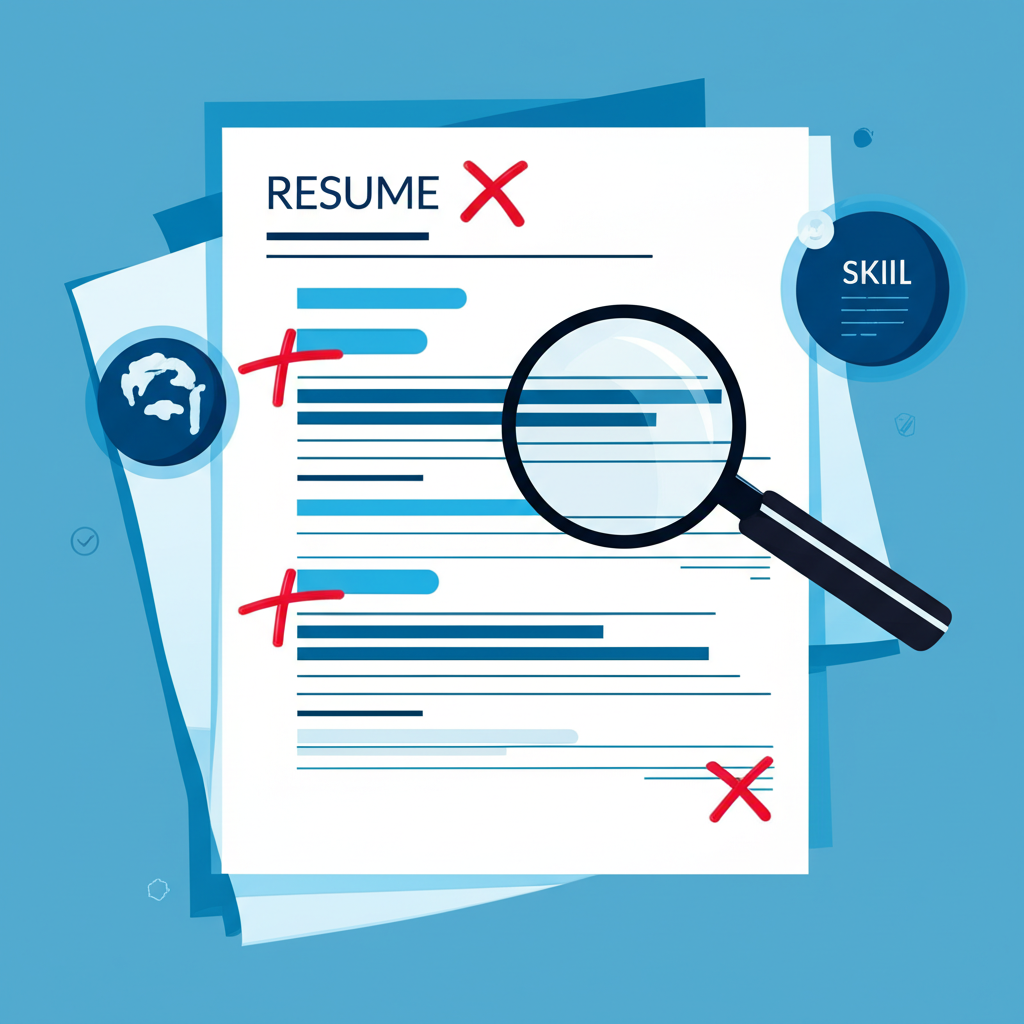Your resume is often the first impression you make on potential employers, yet many job seekers unknowingly sabotage their chances with common mistakes that are easily avoidable. After analyzing thousands of resumes and interviewing hiring managers across various industries, we've identified the top 10 mistakes that could be costing you valuable interview opportunities.
1. Generic, One-Size-Fits-All Resumes
The biggest mistake job seekers make is using the same resume for every application. In today's competitive market, generic resumes simply don't cut it. Hiring managers can spot a mass-distributed resume from a mile away, and it signals a lack of genuine interest in the specific role.
The Fix: Tailor your resume for each application. Highlight relevant skills, adjust your professional summary, and use keywords from the job description. AI-powered tools can help automate this process while maintaining authenticity.
2. Poor Formatting and Design
A cluttered, poorly formatted resume is difficult to read and creates a negative first impression. Many candidates either go overboard with design elements or create documents that are too plain and unmemorable.
The Fix: Use clean, professional formatting with consistent fonts, appropriate white space, and clear section headers. Ensure your resume is ATS-friendly by avoiding complex graphics or unusual fonts.
3. Focusing on Duties Instead of Achievements
Many resumes read like job descriptions, listing responsibilities rather than accomplishments. This approach fails to demonstrate your value and impact in previous roles.
The Fix: Transform duty statements into achievement statements. Use the STAR method (Situation, Task, Action, Result) and include quantifiable results whenever possible. For example, instead of "Managed social media accounts," write "Increased social media engagement by 150% over 6 months, resulting in 25% more qualified leads."
4. Including Irrelevant Information
Including outdated skills, irrelevant work experience, or personal information that doesn't add value to your application dilutes your message and wastes precious space.
The Fix: Be selective about what you include. Focus on the most recent 10-15 years of experience and skills that directly relate to the target position. Remove outdated technical skills and irrelevant personal details.
5. Weak or Missing Professional Summary
Many candidates either skip the professional summary entirely or write generic statements that could apply to anyone. This is a missed opportunity to make a strong first impression.
The Fix: Write a compelling 3-4 line summary that highlights your unique value proposition, key achievements, and career goals. Make it specific to the role you're targeting.
6. Inconsistent or Confusing Employment History
Gaps in employment, inconsistent date formats, or unclear job progression can raise red flags for hiring managers and ATS systems.
The Fix: Use consistent date formats throughout your resume. Address employment gaps honestly but briefly. If you have a non-linear career path, use a functional or hybrid resume format to better showcase your skills.
7. Overusing Buzzwords and Jargon
While keywords are important for ATS optimization, overusing buzzwords like "synergy," "thought leader," or "guru" can make your resume sound generic and insincere.
The Fix: Use industry-specific keywords naturally within context. Focus on concrete skills and achievements rather than vague buzzwords. Let your accomplishments speak for themselves.
8. Neglecting to Proofread
Spelling errors, grammatical mistakes, and typos are among the fastest ways to get your resume rejected. These errors suggest carelessness and poor attention to detail.
The Fix: Proofread your resume multiple times, use spell-check tools, and ask others to review it. Read it aloud to catch errors you might miss when reading silently.
9. Using an Unprofessional Email Address
Email addresses like "partygirl2000@email.com" or "beerlovr@email.com" create an unprofessional impression before hiring managers even read your qualifications.
The Fix: Create a professional email address using your name (e.g., john.smith@email.com or j.smith2024@email.com). This simple change can significantly improve your professional image.
10. Making It Too Long or Too Short
Resumes that are too long overwhelm readers, while those that are too short may not provide enough information to make a hiring decision.
The Fix: Aim for 1-2 pages for most positions. Entry-level candidates should stick to one page, while senior professionals with extensive experience may need two pages. Every line should add value.
The Modern Solution: AI-Powered Resume Optimization
While these mistakes are common, they're also easily preventable with the right approach. Modern AI-powered platforms can help you avoid these pitfalls by:
- Automatically tailoring your resume to specific job descriptions
- Optimizing formatting for both human readers and ATS systems
- Suggesting achievement-focused language
- Identifying and removing irrelevant information
- Ensuring consistency and professional presentation
Taking Action
Review your current resume against this checklist and identify areas for improvement. Remember, your resume is a marketing document designed to get you interviews, not to tell your complete life story. Every element should work toward that goal.
By avoiding these common mistakes and leveraging modern tools and techniques, you'll significantly increase your chances of landing interviews and ultimately securing your dream job. The investment in creating a high-quality, tailored resume pays dividends throughout your career.



